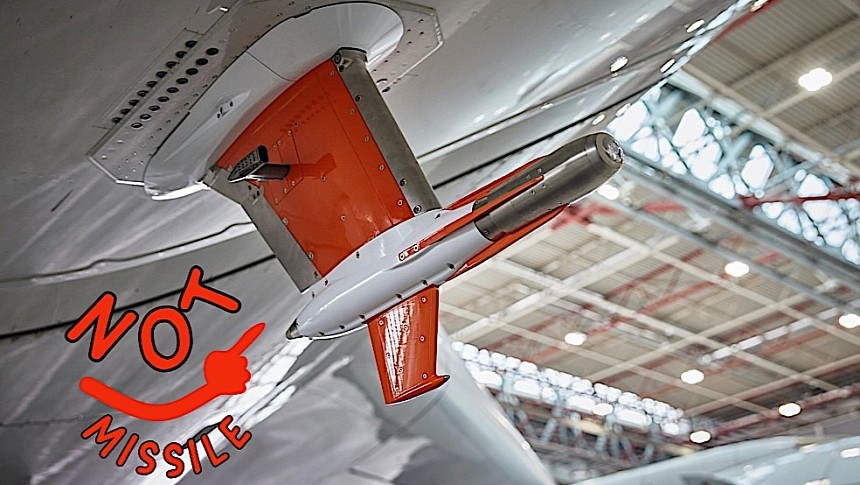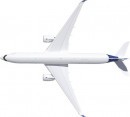With all the climate changes taking place around us, having a good picture of what's going on with our planet is the only way for us to plan ahead and be prepared. Luckily, the technology at our disposal allows us, for the most part, to achieve this goal.
When it comes to looking at our planet's atmosphere we mostly use satellites or other ground-based measuring tech. But there are limits to what they can do, as, for instance, not actually being at the exact altitude being studied impacts the results.
And this is where an organization called IAGOS-CARIBIC comes in. The acronym stands for Civil Aircraft for the Regular Investigation of the Atmosphere Based on an Instrument Container, and it's an umbrella term for the efforts made by several companies in the field of atmospheric studies.
The project aims to equip a civilian airplane with the hardware it needs to measure 100 trace gases, aerosol and cloud parameters. And the plane chosen for the task is a Lufthansa-operated Airbus A350-900.
The aircraft is nicknamed Erfurt, probably after the capital city of the German province Thuringia. It's not scheduled to fly on CARIBIC missions until 2024, but test flights with some of the extra hardware have already commenced.
A clear sign this is not your regular civilian transport is the attachment fitted to the airplane's underside. It looks like some missile from afar, but it's far smaller and totally benign.
The attachment is in fact an air collector that doubles as a sensor for pressure and temperature. The data it collects from outside the plane will be fed to a two-ton measuring laboratory that will be installed inside the A350. The laboratory comprises some 20 instruments to process the attachment's info.
For now, only that exterior appendix has been fitted on the plane, and even flown this month over southern Germany to see how it works and if it affects the plane. After the laboratory is set up and ready to go, Erfurt will be all ready and set.
In about a year, Lufthansa will fly the plane on routes around the world, sampling the air "from the ground to the tropopause region at an altitude of nine to thirteen kilometers" (5.5 to 8 miles). Unlike what satellites are capable of, the Airbus should be able to record more accurate data, given how it'll be in the middle of things and all.
The CARIBIC is backed by Lufthansa, the Karlsruhe Institute of Technology (KIT), Airbus, Safran, enviscope, Dynatec and ACC COLUMBIA Jet Service. It's to be expected the data gathered this way to be used to better understand the change of atmospheric processes, the effects of greenhouse gasses, and all that other nasty climate change-related stuff. Weather forecasting can benefit from this project as well.
And this is where an organization called IAGOS-CARIBIC comes in. The acronym stands for Civil Aircraft for the Regular Investigation of the Atmosphere Based on an Instrument Container, and it's an umbrella term for the efforts made by several companies in the field of atmospheric studies.
The project aims to equip a civilian airplane with the hardware it needs to measure 100 trace gases, aerosol and cloud parameters. And the plane chosen for the task is a Lufthansa-operated Airbus A350-900.
The aircraft is nicknamed Erfurt, probably after the capital city of the German province Thuringia. It's not scheduled to fly on CARIBIC missions until 2024, but test flights with some of the extra hardware have already commenced.
A clear sign this is not your regular civilian transport is the attachment fitted to the airplane's underside. It looks like some missile from afar, but it's far smaller and totally benign.
The attachment is in fact an air collector that doubles as a sensor for pressure and temperature. The data it collects from outside the plane will be fed to a two-ton measuring laboratory that will be installed inside the A350. The laboratory comprises some 20 instruments to process the attachment's info.
For now, only that exterior appendix has been fitted on the plane, and even flown this month over southern Germany to see how it works and if it affects the plane. After the laboratory is set up and ready to go, Erfurt will be all ready and set.
In about a year, Lufthansa will fly the plane on routes around the world, sampling the air "from the ground to the tropopause region at an altitude of nine to thirteen kilometers" (5.5 to 8 miles). Unlike what satellites are capable of, the Airbus should be able to record more accurate data, given how it'll be in the middle of things and all.
The CARIBIC is backed by Lufthansa, the Karlsruhe Institute of Technology (KIT), Airbus, Safran, enviscope, Dynatec and ACC COLUMBIA Jet Service. It's to be expected the data gathered this way to be used to better understand the change of atmospheric processes, the effects of greenhouse gasses, and all that other nasty climate change-related stuff. Weather forecasting can benefit from this project as well.









